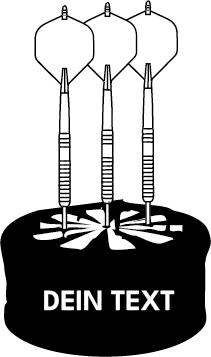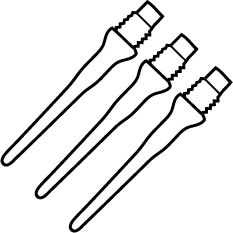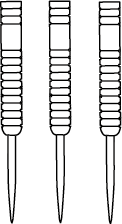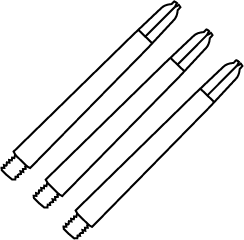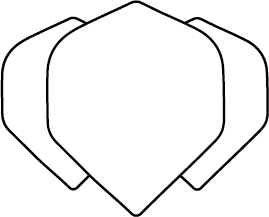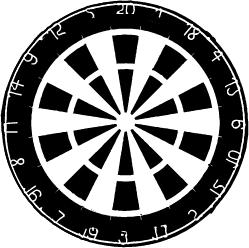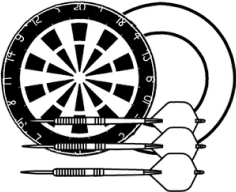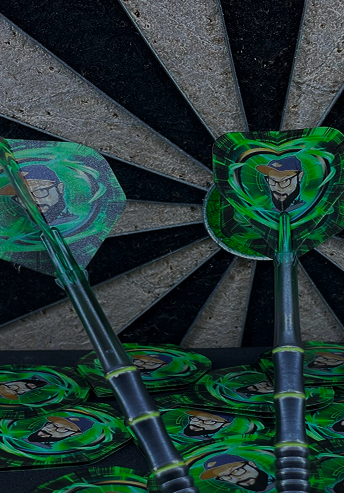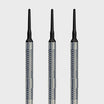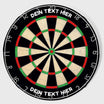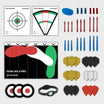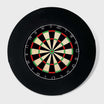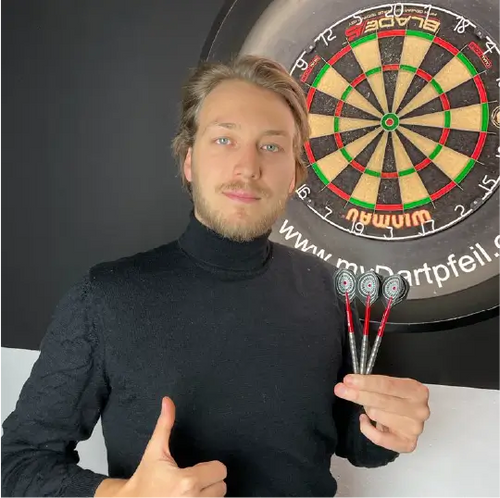
Lukas has been a darts fan since day one and a passionate darts player for over 10 years. After attending the 2016 Darts World Championship at the venerable Alexandra Palace with his future co-founder and then-flatmate Timm, it became clear to him: darts needed to become bigger and more popular in Germany, too. With myDartpfeil and the world's only dart configurator, every darts player—from beginner to professional—can create and customize their own perfect darts.
Everyone has probably asked themselves at some point whether there is a single perfect dart throwing technique. To anticipate the answer: We have to disappoint you, because unfortunately, there is no such thing as a perfect dart throwing technique .
However, there are a few rules you should follow when aiming, holding, and throwing the dart. We'd like to give you an insight into what's important when holding the dart and the throwing motion in order to play good darts and improve your dart throwing technique.
Aiming
The first step involves aiming . Aiming is achieved by aiming at a specific area with your eye . Some players also use a dart to aim at a specific area.
For example, by holding the tip of the dart in front of your eye, aiming at the desired target. However, aiming in darts is only partially conscious , as the desired success does not depend on aiming itself.
Rather, a good player benefits from an automated and repetitive movement .

Holding the darts
The dart grip is also part of the dart throwing motion. This should, of course, always be the same . However, this is much easier said than done, as even a millimeter can make a huge difference in throws.
For example, if you grip the arrow a millimeter further back or forward than usual, it can have a big impact . In the end, that's exactly the millimeter you need to finish a game and hit the double .
Darts is generally considered a game in which the device is held with two fingers . However, this is not required .
Holding the dart with three or even four fingers is also becoming increasingly common among professional players. While Phil Taylor grips the dart with two fingers, Rob Cross wraps almost half his hand around the dart.
Ultimately, how you hold the dart is purely a matter of feel. The important thing is that you hold the dart the same way every time.

Retracting the throwing arm
It's not just the correct finger position that's important when playing darts, but also the movement sequence during the throw itself. This includes the backswing and the momentum for the throw - the so-called pullback.
This process, too, must be automated for perfect dart throwing technique . However, any process involving movement can be difficult to repeat exactly.
There's also the option to have your dart throwing technique analyzed. The pros, for example, use state-of-the-art computer programs and analyze their throwing movements with pinpoint accuracy using high-speed cameras.
What's also interesting in this context is the different approaches taken by different players. While some pull their arm back far beside their head, others hold the dart just up to their nose, somewhat minimizing this retraction.

The acceleration
Acceleration is the fourth part of the throwing motion. The quality of the game probably depends on it the most. Differences often occur in acceleration.
To prevent this, you should find a way to control how quickly you execute the throw. It's all about getting a good feel for the release.
Ultimately, however, acceleration is a combination of the first point: aiming. It's precisely the perfect combination of visual aiming and the perceived acceleration needed to hit a specific area that can determine your success.
The release of the arrow
The release of the dart describes the moment of release. One thing should be said about this: If you're having problems with your dart throwing technique, it's quite possible that the release is the cause.
Dartitis , a disease that makes it impossible for a player to release the arrow at the desired moment, is a major problem.
The moment of throwing and releasing the darts isn't easy for most amateur players. If it were so easy to repeat this process exactly every time, we'd all be darts pros.
The throw-back movement
A precise throw analysis also includes the follow-up throw movement . If the throw isn't executed properly, it can cause problems in the game over time. Here's a rule for beginners to remember to ensure consistent play over time.
First, it's important to consider each dart equally important. Then it's also important to follow through with the throw . You can check this yourself using a simple method.
After each throw, you force yourself to "point" the dart with your index finger. This means you extend your arm completely and follow the trajectory with your index finger.

The flight path must also be observed
It's especially worth observing the trajectory. If you record and analyze it as a video, you can learn a lot. For example, whether the arrow needs to land a little more straight on the board or not.
This allows you to modify the dart to achieve the desired effect . It's worth reading our other blog articles on suitable flights , shafts, and barrels . But the trajectory isn't the only useful tool for working on your dart throwing technique.
Stance is also very important. It's not for nothing that some players, like Stephen Bunting, stand slightly offset and not directly in front of the board . You should also find your best position at the oche to place the arrow in the desired square.
Often, a player has a slight left or right spin . This causes the dart to land in the 5 or 1 rather than the 20.

The perfect dart throwing technique requires patience
So, pay attention to all of the parameters mentioned above and try to constantly work on your throwing style . This will, in the long run, also improve your throwing accuracy. A little patience is also required, because, as the old saying goes, "Good things take time."
To further practice your throwing technique, perhaps even outside of darts, it's a good idea to try out similar movements or sequences . Ideally, these aren't directly associated with a tedious exercise.
We have an example right there: If you enjoy going out for drinks with friends on the weekend, you've probably played a round of beer pong at least once. Here, you have to get a ping-pong ball into cups filled with beer. Here, too, a smooth movement and precise aim are essential.
Learn the best techniques and proven tips that will make you a darts champion. Click here and start your journey to dartboard perfection!
- From beginners to pros: Our secret tips for dart finger positioning will improve your dart game. Click here and expand your skills!
- Broken dart tip ? Find quick help here. Including helpful tips and step-by-step instructions. Click here to find out more!
Sofern nicht anders angegeben, unterliegt das im Beitrag gezeigte Bildmaterial mit Bezug zu Dartspielern und verwandten Themen dem Copyright der Professional Darts Corporation (© PDC).

